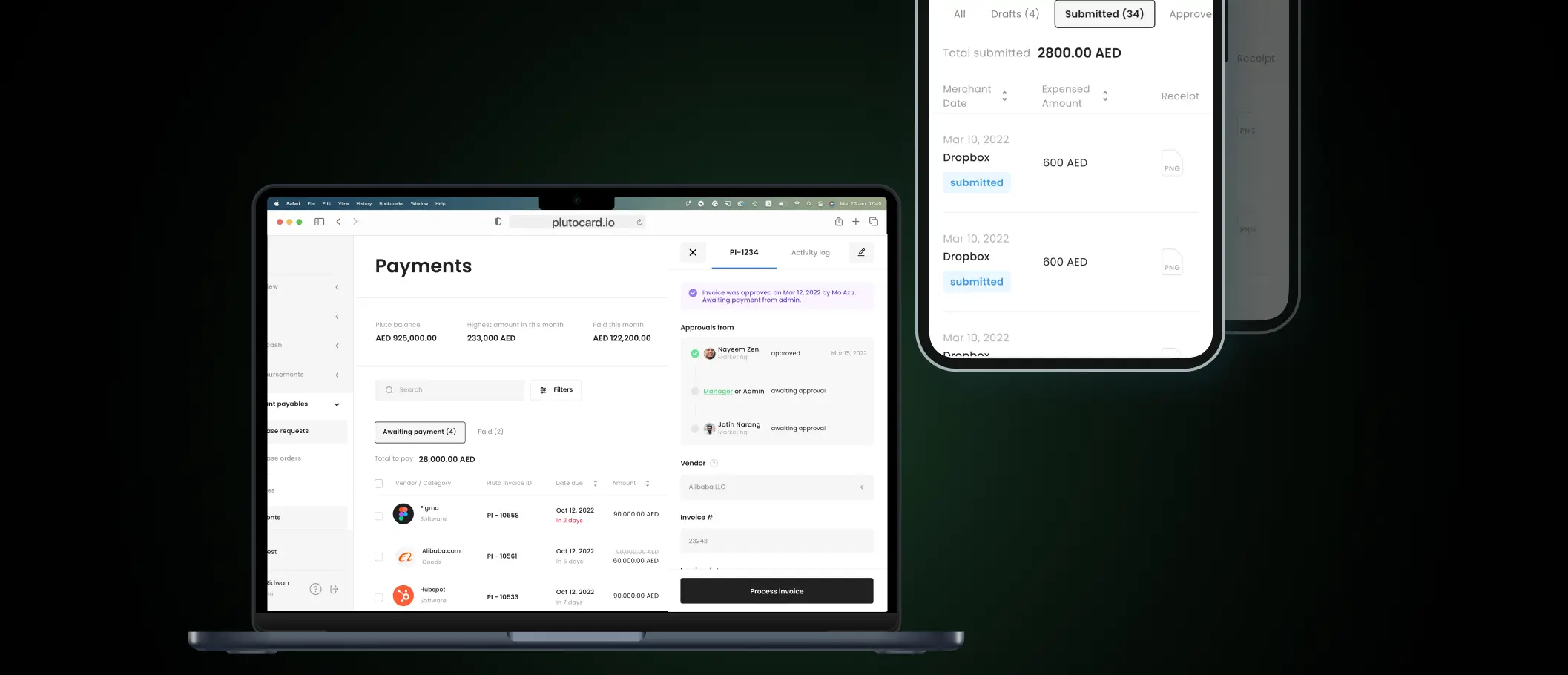Your employee receives the vendor invoice and goes to the department manager and procurement department for three-way matching — invoice, purchase order, and goods receipt. Once approved, the finance department prepares to clear the payment. Finally, the accounting department makes the journal entries and updates accounting records. This is an end-to-end accounts payable process.
But it isn't as simple and straightforward. The chances of errors increase with various stakeholders involved. These range from manual data entry mistakes and invoice duplications to missed discounts, late payments, and inaccurate coding. This intricate process further results in unapproved invoices, incomplete documentation, vendor communication gaps, and mismatched purchase orders.
Hence, it becomes imperative to conduct regular checks. The inspections look into the internal processes to identify loopholes and act as an early sign. This post will discuss what an accounts payable audit is and how you can prepare for it.
{{less-time-managing="/components"}}
What is an Accounts Payable Audit?
An accounts payable (AP) audit is a type of accounting audit that investigates a company's accounts payable records, statements, and processes for potential errors, fraud, and non-compliance.
In an AP audit, auditors track AP transactions from beginning to end, including the purchase order, invoice, approval steps, payment, and reconciliation, ensuring that everything has been recorded and documented correctly.
The auditors assess the internal records and documentation for the following:
- Validity - Are all invoices and transactions verified as genuine, preventing payment for unauthorized items?
- Completeness - Are the invoices, purchase orders, and delivery receipts recorded correctly to avoid missing any payments?
- Accuracy - Is every invoice amount cross-checked against corresponding purchase orders and delivery receipts to prevent payment errors?
- Compliance - Are the accounts payable documents compliant with tax and company policies to avoid penalties and ensure ethical financial practices?
Further, the auditors inspect the internal processes for the following:
- Segregation of Duties -Are responsibilities clearly divided to prevent conflicts and maintain a system of checks and balances
- Approvals - Are transaction approval processes in place, ensuring compliance with policies and accountability?
- Access Controls - Are access controls effectively implemented to protect sensitive information, preventing unauthorized access and potential breaches?
By addressing these questions, the auditors find areas to improve and strengthen the accounts payable system. This process provides a thorough picture of financial operations, identifying weaknesses that could affect accuracy, efficiency, and compliance.
How to Conduct an Accounts Payable Audit
Before establishing an audit plan, you need three things to prepare for an accounts payable audit:
1. Stakeholder Input
Schedule meetings with key stakeholders such as finance managers, approvers, and document handlers. Ask for their insights on pain points, challenges, and expectations related to the accounts payable process. Document their feedback and use it to tailor the audit plan. It helps to address specific concerns and improve efficiency.
2. Documents Repository
Conduct a comprehensive review of the current document storage system. Ensure all relevant documents are organized, labeled, and stored in a secure, easily accessible location. If you are using digital AP software for the repository, validate that it has proper version control and is updated.
Checklist of Documents Required
- Vendor Invoices
- Purchase Orders
- Goods/Services Receipts
- Vendor Contracts and Agreements
- Payment Records
- Expense Reports
- Vendor Statements
- Credit Memos
- Internal Controls and Policies
- General Ledger Entries
- Tax Documents
- Bank Reconciliation Statements
- Vendor Information
- Access Logs
- Expense Allocation Documentation
- Documentation of Disputed Invoices
- Employee Authorization Forms
- Proof of Payment
- Inventory Records (if applicable)
- Regulatory Compliance Documentation
3. Access Control
Review and update access controls to restrict access to sensitive financial data. Work with IT and security teams to ensure only authorized personnel can access critical systems and repositories. Also, periodically verify user access levels and promptly revoke access for individuals who no longer require it. This helps maintain a secure and controlled environment.
4-Step AP Audit Procedure
With all the documents ready, inputs gathered, and access shared, you can initiate the AP audit procedure. It includes the following steps:
1. Create an Audit Plan
Establish an audit plan to define the scope of the audit, specifying the departments and time frame under consideration. Assign audit team members and allocate necessary resources for the audit. Identify potential risks such as errors or compliance issues.
Here is what an audit plan looks like.
Objective
The primary aim of this audit is to express an opinion on the fairness of XYZ Company's financial statements in accordance with Generally Accepted Accounting Principles (GAAP).
Scope
The audit will cover the financial statements of XYZ Company for the year ended December 31, 20XX, including the balance sheet, income statement, statement of cash flows, and accompanying notes.
Audit Team
The audit team will consist of the lead auditor, staff auditors, and specialists as needed. The team members will be assigned specific tasks based on their expertise and the areas to be audited.
Audit Approach
The audit will be conducted as per the auditing standards and guidelines issued by the relevant regulatory bodies. The approach will include substantive testing, tests of controls, analytical procedures, and other audit procedures as deemed necessary.
Materiality Threshold
The materiality threshold for the financial statements is set at $XXX. Any misstatements or discrepancies exceeding this threshold will be considered material.
Risk Assessment
The audit team will conduct a risk assessment to identify and assess the risks of material misstatement in the financial statements. The evaluation will consider both inherent and control risks.
Audit Procedures:
Cash and Cash Equivalents:
- Confirm bank balances and reconciliations
- Test cash transactions and cutoff procedures
- Review bank statements and related agreements
Revenue Recognition
- Test sales transactions and revenue recognition policies
- Review contracts and agreements for completeness and accuracy
- Verify the accuracy of recorded revenue
Inventory
- Observe the physical inventory count
- Test inventory valuation methods
- Review inventory turnover and obsolescence
Accounts Payable
- Confirm outstanding payables with vendors
- Test completeness and accuracy of recorded payables
- Review payment terms and agreements
Fixed Assets
- Verify the existence and valuation of fixed assets
- Test depreciation calculations
- Review additions and disposals
Documentation
All audit procedures, findings, and conclusions will be documented in working papers, including supporting evidence and references to applicable accounting standards.
Reporting
A draft of an audit report will be prepared for management review before issuing the final report. The report will include the auditor's opinion on the financial statements and any relevant disclosures.
2. Fieldwork
With the audit plan in place, the audit team moves on to a detailed examination of the accounts payable process. Simultaneously, it also engages with key stakeholders to get valuable insights into the practical aspects of the AP process. In this stage, it ascertains the effectiveness of internal processes in safeguarding against potential risks. It performs the following assessments:
- Verify completeness and accuracy of invoices, purchase orders, and payment records
- Match invoices with purchase orders and delivery receipts
- Check for discrepancies in amounts or quantities
- Evaluate the adherence of the approval process to established policies
- Confirm proper authorization before payment processing
- Review vendor master file for accuracy and up-to-date information
- Implement checks to identify and rectify duplicate payments
- Ensure compliance with internal policies, industry regulations, and legal requirements
- Review accruals and prepaid expenses for accurate reflection of the financial statements
- Verify the accuracy of data entry in the financial system
However, an audit team struggles the most with finding the proper documents. Either the internal team fails to provide the specific invoices, purchase requests, and purchase orders, or it gets lost in the pile of documents. This slowdown in the audit process increases the risk of oversight and incomplete scrutiny, compromising accuracy and thoroughness.
The best way to fix this leak is to go for accounts payable automation.
With AP automation, you streamline approvals and payments and create a centralized hub for bookkeeping. Instead of manual record-keeping, the tool automatically captures and extracts all necessary documents. Its integration capabilities ensure consistent data across the organization, simplifying data management and retrieval.
3. Audit Report
Finally, the audit team prepares a detailed audit report, including an executive summary, methodology, findings, and recommendations. The report provides a comprehensive overview, detailing identified issues and areas of strength.
To read an audit report and implement it effectively, follow these steps:
- Involve the audit committee, executive director, and senior financial staff in reviewing the report.
- Identify significant issues, such as financial conflicts of interest, and address them promptly. Classify minor concerns, such as operational inefficiencies and technological deficiencies, for resolution over several months.
- Consider the list of best practices and custom recommendations provided by the auditors. Use them to plan and prioritize your organization's next steps.
- Evaluate the "scope, nature, and timing" of the audit conducted by the audit team to assess the auditors' efficiency in utilizing resources without redundancy. Explore ways to make the audit process more efficient for the next cycle.
Regardless of the audit cycle, continuously assess and improve auditing procedures. Explore options such as accounts payable automation, process optimizations, and strategic partnerships.
4. Follow-up
During this stage, the audit team monitors the implementation of recommended changes. It involves continuous communication with stakeholders to address concerns or questions arising from the audit report. The team also ensures that the proposed improvements are effectively integrated into the organization's processes.
Why is an Accounts Payable (AP) Audit Important?
Conducting regular AP audits is crucial for maintaining financial accuracy, compliance, and operational efficiency. With multiple stakeholders involved in the accounts payable process, errors can easily slip through the cracks. From detecting fraud to preventing duplicate payments, an AP audit ensures that your company is not losing money due to oversights or manual mistakes.
By conducting regular audits, you not only safeguard your financial records but also build a culture of accountability across departments. Moreover, these audits help you stay compliant with tax regulations and internal company policies, reducing the risk of penalties and improving your overall financial health.
Accounts Payable (AP) Audit Checklist
To conduct a thorough AP audit, it's essential to have a well-structured checklist. Below are key items to ensure a smooth audit process:
- Vendor Invoices: Ensure that all vendor invoices are accurate, recorded, and approved.
- Purchase Orders: Verify that purchase orders match the invoices and goods receipts.
- Three-Way Matching: Cross-check invoices, purchase orders, and goods receipts for consistency.
- Payment Records: Confirm that payment records are complete, and payments are made within the due dates.
- Expense Reports: Review all expense reports for accuracy and proper documentation.
- Internal Controls: Verify that internal controls, such as segregation of duties, are properly implemented.
- Access Logs: Ensure that access to sensitive financial data is restricted and monitored.
- Tax Compliance: Confirm compliance with local, state, and federal tax regulations.
- Vendor Statements: Reconcile vendor statements with internal records for any discrepancies.
Accounts Payable (AP) Audit Best Practices
To get the most out of your AP audits, it's essential to follow industry best practices. Here are some key recommendations:
- Automate the AP Process: Implement AP automation software to streamline approvals, payments, and record-keeping, minimizing human errors.
- Maintain Detailed Documentation: Ensure that all relevant documents, such as invoices, purchase orders, and payment records, are stored securely and are easily accessible during audits.
- Perform Regular Reconciliations: Periodically reconcile vendor statements and internal records to ensure financial accuracy.
- Strengthen Internal Controls: Review and update internal controls to prevent fraud and unauthorized access. Properly segregate duties to avoid conflicts of interest.
- Train Your Team: Regularly train your finance team on the importance of compliance and proper documentation. Ensure they understand the audit process and know how to address potential issues.
- Monitor Key Performance Indicators (KPIs): Use KPIs to track the efficiency and accuracy of your accounts payable process. Monitoring these metrics can help identify issues early and enhance decision-making.
By following these best practices, your AP audits will not only become more efficient but will also provide valuable insights into improving your overall financial operations.
Preparing for Your Next Accounts Payable Audit
To make your next audit easier for the auditors and the internal team, address past findings and consider adopting accounts payable automation for efficiency. By addressing previous audit issues, you proactively improve your internal processes by resolving identified issues. It builds a culture of accountability and responsibility, laying the groundwork for a more efficient and effective audit process in the future.
An AP automation software becomes a central hub for the documentation, streamlining the intricate process. Automated document capture and retrieval ensure swift access, minimizing errors. Also, it highlights areas for improvement, enabling the team to address issues beforehand.
As a result, audits become more streamlined, faster, and less stressful, ensuring strict adherence to rules and optimal functionality. We have curated a list of top AP automation software to help you pick the right one. Check the top 7 accounts payable automation solutions that simplify the accounts payable process and audits.
.png)


.png)
















